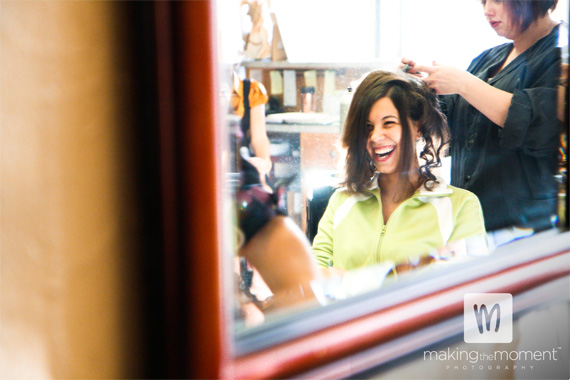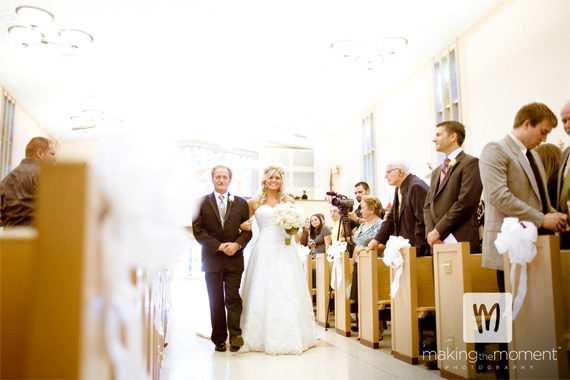Just a few weekends back, we here at Making the Moment Photography kicked off our 2010 Wedding Photography season – and I’m more than excited about what the year holds. As I was shooting this weekend, it struck me that I’m a few years into my photographic career – and that I’ve come along way.
The Journey Matters
Now before my head gets too big, I’ll be the first to admit – life is a journey, and I’ll forever be a student of photography. That aside, I found myself reflecting on my beginning years – laughing at some of the silly beliefs I held about what it meant to be a photographer, and shaking my head over some practices I had that simply didn’t work when shooting. In the spirit of self-reflection and wanting to give back to the broader wedding photography industry around me – I thought I’d put together this article.
Below are my “Top 10 Rookie Mistakes” that beginner wedding photographers are prone to. About to photograph your first wedding? Read up!
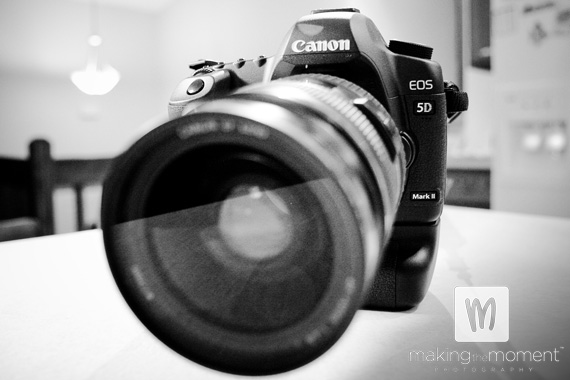
# 10: Effective Pre-Planning
This can be a hard one – but it’s SO important. I firmly believe it’s part of a wedding photographer’s job to assist a bride and groom in planning out their day schedule. Without having some healthy conversations about wedding itineraries and time-lines, it’s impossible for a photographer to do an effective job. Not only is it important for the photographer, but it’s crucial for the bride and groom. Most couples I’ve worked with this is their first time planning a wedding day – and it’s a LOT of work for them. It encompasses lots of details, lots of stress, and sometimes can get to be a pretty packed day. Of course it comes with experience, but as a photographer you’ll learn to help your brides and grooms effectively plan out and think through how much time is needed for different photo portions of the day, and how to avoid having a stressy schedule. Is this your first wedding? I’d highly recommend voluntarily assisting with a pro-photographer if you are able to – taking notes on what parts of the day move faster than others. Experience is invaluable.
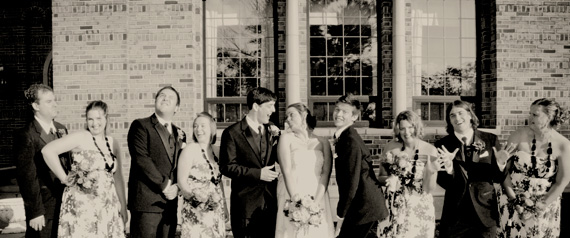
# 9: The Family Photo List
Just because it’s #9 on the list – don’t let it fool you – it’s huge! If a bride and groom would like a “traditional” family portrait set handled (usually after the ceremony… in fact, highly recommended that it takes place then if it’s happening at all!), it’s important that you and the bride have a family list to work from. Not every bride and groom will do this portion of the day – and for every photographer it’s a bit different. Let me clarify here – I’m not talking about getting a list for the entire day – just a list of what family members to photograph and in what order for the “formal” family pictures.
Why a list? Because it’s your job as a photographer to run this part of the day for them. The last thing that should be happening is having a bride & groom (on their wedding day!) standing up on the altar corralling their family. It’s just too much stress for them – they need to relax and have fun – you should be doing the hard work. If you have a list, you can communicate clearly, and know who needs to be in on what shot. More-so, if the decisions aren’t made up front, frequently families begin to have a hard time making decisions about who should be in what photo, and who shouldn’t be in what photo. When it’s all said and done, a list eliminates tons of stress, makes things go much faster, and ensures that the bride and groom (& their families!) get the photos from this particular part of the day they want.
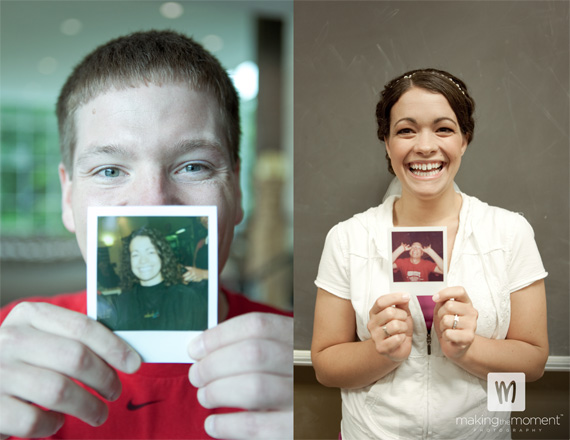
# 8: Replicating Work
It’s very easy when you’re just starting out to head to “Joe Photograher’s” blog, check out what he’s doing and say “I’m going to do that exact pose / set-up today”. When younger photographers do this, they are grabbing a safety-line for themselves – and simultaneously stunting the growth of your own creative mind.
Granted – there is nothing wrong with borrowing ideas from other photographers – so long as you can put your own unique spin on them. What I’m talking about is undercutting your creative mind in the important stages of it’s growth, by sidestepping creative opportunities with risk. The truth is the very best photographers are the ones making the trends happen – and you know how they do that? Uncharted artistic exploration. Simple – scary – real. Don’t be afraid to fail – try something new every time you shoot – you won’t be sorry. Wedding photographers of the 80’s & 90’s made their living off of reproducing set-up shots that they had mastered over and over again – how fun is that? I’m not kidding here – embrace risk, and if it doesn’t work out? Try something else. Before I start every session, I let a couple know that we are “experimenting” – not working from a mapped out plan I had in the morning when I woke up.
# 7: Knowing Your Style
This follows from above – know who you are. It will take some time to refine your photographic style – but it all starts with your personality. Truthfully, you won’t shoot well unless your working comfortably as yourself. Take some time – ask a family member or friend (someone you’re comfy with) out for a photo-shoot. Learn how it feels to be behind the camera providing direction – and see how they respond to working with you. Afterward, ask them how they felt about things – learn and grow from this experience. I fully believe one of the things that allows good photographers to excel at working with people is that they are fully confident in not just their gear, but in who they are and how they best communicate. Mine is a strange mix of self-effacing humor and telling stories from my child-hood. 🙂
# 6: Flash in Dressing Rooms / Church
Nothing breaks an intimate moment worse than a bright electronic camera flash – especially when it’s happening every few seconds! Your goal while working with a bride and groom during the “preparations” phase of the day should be to be as unobtrusive and candid as possible. The bridal party won’t relax and “be themselves” if they always feel as if their under the lens. I make it my goal to blend in and be as in-obvious as possible when shooting in these situations.
If you’re shooting in a church – always always always respect the sanctity of the event by shooting natural light. Nothing makes church officiants angrier than a photographer walking around firing a flash every few seconds, and to be honest – nothing makes you stand out more as an amateur. I’ve seen so many “photographers” break this rule – it’s a really important one too. A general rule of thumb is that after the processional, the flash should be turned off, and you should become a lot less noticeable.
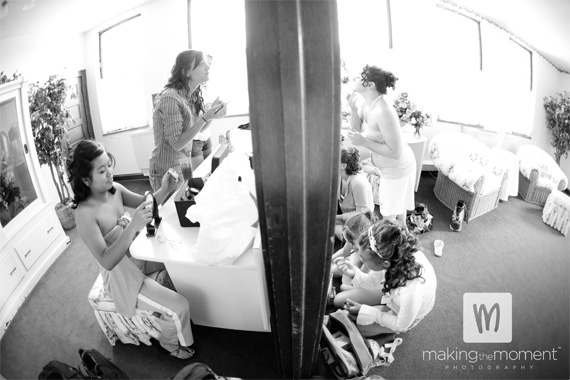
# 5: Over-using that new lens
New gear is fun, I’ll be the first to tell you. But the last thing a bride needs is half of her wedding images being shot with the new fish-eye you picked up last week. It will be tempting for sure – and that’s the creative explorer in you, and that’s a good sign. However, wisdom says that it’s wise to teach yourself boundaries – and this is a great place to start. Slowly work your new lens (especially if it’s a specialty lens) into your imagery.
# 4: Selling Yourself Short
This one is tricky – don’t cheat yourself or the bride and groom. It’s INCREDIBLY important that they understand where you’re at in your photographic journey. At the same time, it’s important that you’re able to grow not only from the experience you’ll gain from handling their wedding images, but that you’ll be able to re-invest any earnings into new equipment to grow your art. Are you uncomfortable charging for the wedding day? That’s fine – let them know why up front (“this is my first / second time – I’m not sure what this will look like”) but ask them to take a risk with you by only purchasing the images they like – that way they’re free of any financial commitment if you blow it – and you’re able to learn more about what people like and don’t like when you succeed.
# 3: Dont’ Bring Monkeys
Very important – do not bring monkeys to the wedding, no matter what. In fact, as a general rule – don’t bring any animals with you at all. Trust me. 🙂
# 2: Shooting Raw
Your camera can take JPEG images and RAW images (unprocessed / uncompressed). Although it’s easier on space to shoot jpeg – always shoot “Raw”. The advantages of shooting “Raw” image files are too numerous to mention – but it’s a must for you. With Raw, you’ll be able to handle the color temperature in post-production, have a greater degree of control on exposure latitude, and plain and simple be happier later. Do it.
# 1: Setting Healthy Expectations
My father once taught me that life is often about expectations, meaning that on one level or another the way people feel after you do something for them is based on what their expectations were before you delivered. That being said – it’s incredibly huge the a bride and groom understand who they’re hiring, and what that looks like, and this works on a few levels.
Your Experience
if you’re a first-timer or newer, make sure the couple has an expectation that works in accordance with reality. If your bride has dreams of spending $500 and you delivering high-end photography, you’re really on track to devastating someone’s day. Avoid that by encouraging couples with high expectations to work with a professional that fits their stylistic desires, and by working with couples who are hoping to help you grow in your art.
Delivery Dates
Simple and sweet – make sure the couple your working with understands exactly when and exactly what they’re getting from you. And then give it to them a week early 😉
I hope you enjoyed my thoughts. Remember, these are all mistakes I feel that I made (at one time or another) as I began my journey into being a professional wedding photographer. Well, other than the monkey thing 😉 That being said – this isn’t meant to be read as any sort of “me looking down on you” sort of article – I truly want to be of help to any amateur photographers out there – and especially to the brides they’re serving! The truth is, wedding photography is a complex and incredibly demanding job – and I am a huge believer in the photographic community sharing and learning from itself. If it weren’t for mentors that helped me grow, I wouldn’t be able to work with the awesome brides and grooms that I get to work with today.

